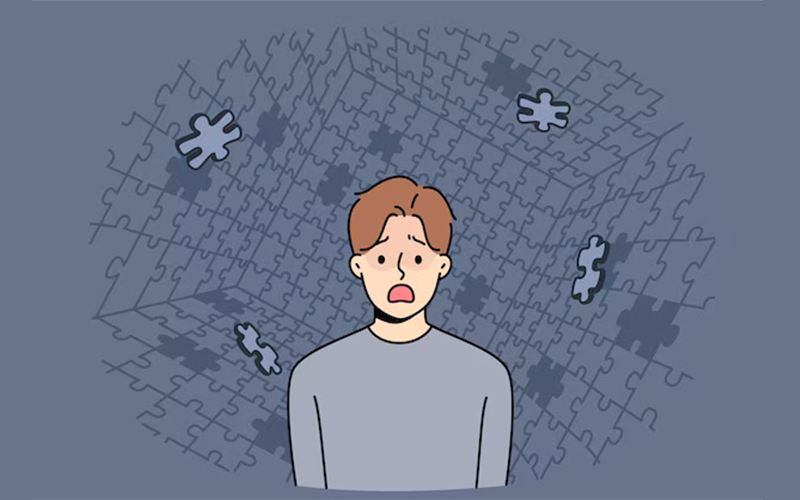Hysteria FAQs
11. Are there any cultural or religious beliefs that influenced the
understanding of hysteria?
Yes, cultural and religious beliefs have influenced the understanding of
hysteria throughout history. For example, in ancient civilizations,
hysteria was often attributed to supernatural forces or divine punishment.
In medieval Europe, it was sometimes linked to witchcraft or demonic
possession.
12. Did the advent of psychoanalysis influence the understanding and
treatment of hysteria?
Yes, the advent of psychoanalysis, spearheaded by figures like Sigmund
Freud, had a profound impact on the understanding and treatment of hysteria.
Freud's work with patients experiencing hysterical symptoms led to the
development of psychoanalytic theory, which emphasized the role of
unconscious conflicts and childhood experiences in the manifestation of
psychological symptoms.
13. How did the medical community come to recognize the limitations
and biases associated with the diagnosis of hysteria?
Over time, as medical knowledge advanced and social attitudes evolved,
the medical community began to recognize the limitations and biases
associated with the diagnosis of hysteria. This recognition was fueled
by increasing awareness of the diversity of psychological experiences
and a growing understanding of the influence of social and cultural
factors on health and illness.
14. Are there any contemporary disorders or conditions that bear
resemblance to historical notions of hysteria?
Yes, conditions such as conversion disorder and certain somatic symptom
disorders bear resemblance to historical notions of hysteria. These
disorders involve the manifestation of physical symptoms without a
discernible medical cause and are often influenced by psychological
factors.
15. Has the study of hysteria contributed to advancements in
psychology and psychiatry?
: Yes, the study of hysteria has contributed to advancements in
psychology and psychiatry by highlighting the complex interplay
between psychological and physiological factors in the manifestation of
symptoms. It has also led to the development of therapeutic approaches
aimed at addressing the underlying psychological conflicts and distress
associated with such symptoms.
16. What impact did the feminist movement have on challenging and
re-evaluating historical notions of hysteria?
The feminist movement played a crucial role in challenging and
reevaluating historical notions of hysteria. Feminist scholars critiqued
the gender bias inherent in the diagnosis and treatment of hysteria,
highlighting how it reflected broader patriarchal attitudes towards women's
health and autonomy. This critique contributed to a more nuanced understanding
of psychological disorders and paved the way for greater recognition of women's
agency in shaping their own narratives of health and illness.
17. Are there any lingering misconceptions or stereotypes about
hysteria that persist in modern society?
While the term "hysteria" is no longer used in contemporary medical
practice, some misconceptions and stereotypes about psychological
disorders, particularly those affecting women, may persist in modern
society. These may include beliefs about women being more prone to
emotional or irrational behavior or dismissive attitudes towards symptoms
that are not easily explained by traditional medical frameworks. Efforts to
promote mental health awareness and combat stigma are essential in
addressing these lingering misconceptions.
18. How did advancements in neuroscience contribute to our understanding
of conditions once labelled as hysteria?
Advancements in neuroscience have provided insights into the biological basis
of conditions once labelled as hysteria. For example, functional neuro imaging
studies have revealed patterns of brain activity associated with symptoms
traditionally attributed to hysteria, shedding light on the neural mechanisms
underlying these experiences and challenging the notion of hysteria as purely
psychogenic.
19. What are some contemporary perspectives on the historical diagnosis
of hysteria?
Contemporary perspectives on the historical diagnosis of hysteria often
emphasize its socio-cultural context and the ways in which it reflected
broader societal attitudes towards gender, sexuality, and mental health.
Scholars may critique the pathologization of normal human experiences, such
as emotional distress or bodily sensations, and highlight the importance of
understanding symptoms within their individual and cultural contexts.
20. How has the shift towards patient-centered care influenced the approach
to conditions once associated with hysteria?
The shift towards patient-centred care has influenced the approach to conditions
once associated with hysteria by prioritizing the experiences and perspectives of
patients. This approach recognizes the importance of understanding the meaning and
context of symptoms for each individual, moving away from a one-size-fits-all
diagnostic framework. It encourages healthcare providers to engage in open dialogue
with patients, collaboratively explore underlying factors contributing to symptoms,
and tailor treatments to meet their unique needs and preferences.
Part-1
Part-3s








